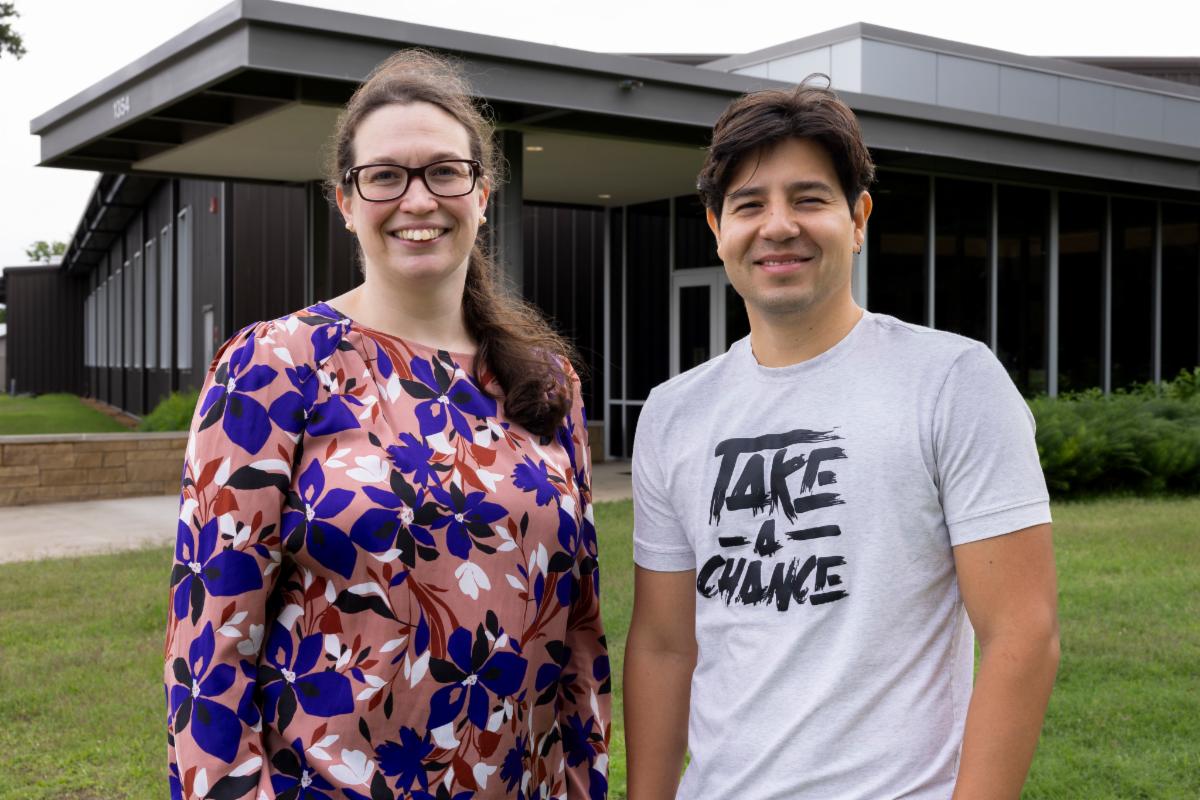June 2025 Arkansas Ag Research Report
IN THIS ISSUE:
- Weed scientists are looking beyond the visual spectrum.
- What’s wrong with my lawn? Research points to a possible answer.
- How to use space lasers and AI to measure large forest area biomass.
- Arkansas rice research gives a boost for beer.
- 3D food printing has a new ‘bioink’ in the form of sorghum proteins.
Listen to This Newsletter 🎧
AI in Ag
Hyperspectral Sensor Pushes Weed Science a Wave Further
By combining artificial intelligence with sensors that can see beyond visible light, Arkansas Agricultural Experiment Station researchers have developed a system that exceeds human discernment at assessing herbicide effectiveness.
The team of researchers, with Aurelie Poncet as the principal investigator, recently published a study in Smart Agricultural Technology providing proof-of-concept that hyperspectral sensors can help in quantifying herbicide effectiveness, a critical element of weed management that helps curb herbicide resistance. Poncet is an assistant professor of precision agriculture in the crop, soil and environmental sciences department.
Space lasers, AI used by geospatial scientist to measure forest biomass
Satellite data used by archaeologists to find traces of ancient ruins under dense forest canopies can also be used to measure how much carbon is retained and released in forests, according to a new study.
Hamdi Zurqani, an assistant professor of geospatial science for the Arkansas Forest Resources Center and the College of Forestry, Agriculture and Natural Resources at the University of Arkansas at Monticello, integrated LiDAR data from NASA with other open access satellite imagery into Google Earth Engine and applied AI algorithms to quickly and accurately map large-scale forest aboveground biomass, a key piece of information in measuring a forest’s carbon cycle, which helps climate change research.
Becca Muenich, an associate professor of biological and agricultural engineering, received the Purdue University Agricultural & Biological Engineering Outstanding Alumni Award in recognition of her exceptional contributions to the field, academic leadership and enduring impact as a Purdue alumna.
“Dr. Muenich left a great legacy at Purdue and has brought that leadership and service mindset to her role here,” said Terry Howell Jr., biological and agricultural engineering department head. “Her work is respected all over the world, and we are thrilled to celebrate this award with her.”
As Arkansas rice producers face increasing agronomic and economic headwinds, new assistant professor of post-harvest grain processing Kaushik Luthra is ready to roll up his sleeves and get to work as an assistant professor in the biological and agricultural engineering department.
“I’m excited to give back to this amazing community through research and extension,” Luthra said. “My goal is to promote the best post-harvest practices that add value to Arkansas crops and improve profitability for all stakeholders. I’m fully committed to making a lasting, positive difference.”
Research Spotlights
‘What’s wrong with my lawn?’ Research points toward possible answer
Wendell Hutchens, an assistant professor of turfgrass science in the horticulture department, said he is often asked the question: “What’s wrong with my lawn this spring?”
With spring rains, warm-season turfgrasses such as bermudagrass and zoysiagrass are at risk of a fungal disease called large patch that can leave a lawn marked with large brown areas of dead and dying grass.
Hutchens and Samuel Kreinberg, a University of Arkansas graduate student specializing in turfgrass science, recently published an article in the Crop Science journal which provides critical knowledge about the disease that can compromise the health, aesthetics and usability of turfgrass.
Beer gets a boost from Arkansas rice thanks to new research
Christian Schubert and Scott Lafontaine are fighting an old prejudice: that rice doesn’t belong in beer. Now they’ve got the research to upend that ancient bit of brewing snobbery.
A pair of recently published studies by Schubert and Lafontaine show that rice can play a pivotal role in the development of both flavor and what’s known as extract yield — two factors that could have significant economic implications.
Sorghum proteins offer resilient 3D-printable ‘bioink’ base
Food scientists are paving the way for 3D-printed food and pharmaceuticals based on grain sorghum, an ingredient that is drought tolerant, offers health benefits to consumers, and — maybe most importantly, won’t turn into a blob.
Ali Ubeyitogullari, an assistant professor of food engineering with the food science and biological and agricultural engineering departments, and Sorour Barekat, a postdoctoral fellow in the food science department, showed how grain sorghum proteins can be formulated as a new “bioink” to improve cohesion in 3D-printed foods. Their work was recently published in the International Journal of Biological Macromolecules.
Watch
Michael Popp – Economics on the Farm
Growing up on a farm, Michael Popp knows the risks farmers face. As a professor in the department of agricultural economics and agribusiness, Popp aims to accelerate research and improve access to findings that enhance profitability, improve risk management, and streamline resource utilization by row crop and livestock producers in Arkansas and beyond.
Hot off the Press
Summaries of Arkansas Cotton Research 2024
This year’s annual collection of cotton research from the Arkansas Agricultural Experiment Station offers an overview of the 2024 crop and updates on cotton breeding and pest management research.
Upcoming Events
- July 21 – Getting to the Root of Crop Health: Cold Plasma and Ozone for Water Sanitation
- July 29-30 – Soybean College at the Jackson County Extension Center
- July 31 – Northeast Rice Research and Extension Center Field Day
- August 6 – Turfgrass Field Day
- August 7 – Getting to the Root of Crop Health: Stratified Substrates for Nursery and Greenhouse Crops
- August 7 – Rice Field Day at the Rice Research and Extension Center in Stuttgart
- August 14 – Pine Tree Research Station Field Day













